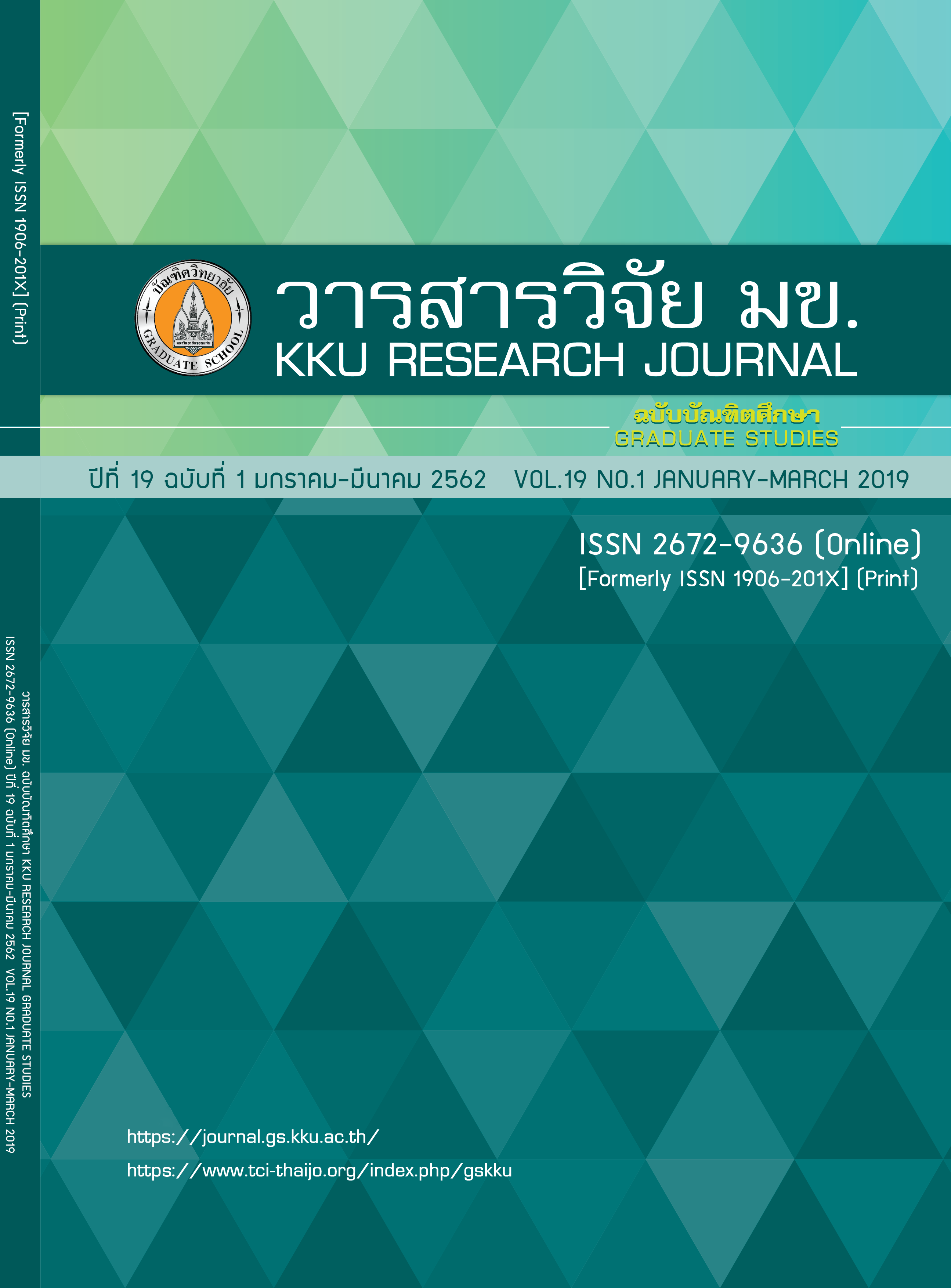Differential Phosphoproteomics Analysis to Identify Proteins and Pathways of Human Lung Epithelial Cells During Exposure to Burkholderia Pseudomallei
Keywords:
Burkholderia psudomalliei, Bp1026b, A549, Phosphoprotein, Human lung epithelialAbstract
Burkholderia psudomalliei (Bp) is the causative agent of melioidosis, an infectious disease of humans and animals. At present there is no available human vaccine that protects against Bp, and with the current limitations of antibiotic treatment, the development of new preventative and therapeutic interventions is crucial. This study elucidated human epithelial host cell responses immediatly after exposure to Bp. Forty-five phosphoproteins of human lung epithelial cells were activated after exposure to Bp. Seven cellular pathway were found to be associated with 8 of those activated phosphoproteins. The results suggested the response of the host cell including cell proliferation, gene expression, differentiation, mitosis, cell survival, energy production and apoptosis. These results suggested the rapid response of the host cell and the possible importance of phosphoproteins in host responses to pathogen. Moreover, those phosphoproteins can be fulfill basic knowledge to insight host response to control Bp infection.
References
2. Fehrenbach H. Alveolar epithelial type II cell: defender of the alveolus revisited. Respiratory research. 2001;2(1):P33.
3. Zhou A-X, Hartwig JH, Akyürek LM. Filamins in cell signaling, transcription and organ development. Trends in cell biology. 2010;20(2):P113-123.
4. Cousin MA, Tan TC, Robinson PJ. Protein phosphorylation is required for endocytosis in nerve terminals: potential role for the dephosphins dynamin I and synaptojanin, but not AP180 or amphiphysin. Journal of neurochemistry. 2001;76(1):P105-116.
5. Harris SL, Levine AJ. The p53 pathway: positive and negative feedback loops. Oncogene. 2005;24(17):P2899.
6. Zhang X. Vitamin A and apoptosis in prostate cancer. Endocrine-related cancer. 2002;9(2):P87-102.
7. Ishaque A, Al-Rubeai M. Role of vitamins in determining apoptosis and extent of suppression by bcl-2 during hybridoma cell culture. Apoptosis. 2002;7(3):P231-239.
8. Davenport RC, Bash PA, Seaton BA, Karplus M, Petsko GA, Ringe D. Structure of the triosephosphate isomerase-phosphoglycolohydroxamate complex: an analog of the intermediate on the reaction pathway. Biochemistry. 1991;30(24):P5821-5826.
9. Naito S, Shimizu S, Maeda S, Wang J, Paul R, Fagin JA. Ets-1 is an early response gene activated by ET-1 and PDGF-BB in vascular smooth muscle cells. American Journal of Physiology-Cell Physiology. 1998;274(2):C472-C80.
10. Moon SY, Zheng Y. Rho GTPase-activating proteins in cell regulation. Trends in cell biology. 2003;13(1):P13-22.
11. Saito H. Purification of high molecular weight kininogen and the role of this agent in blood coagulation. The Journal of clinical investigation. 1977;60(3):P584-5894.



